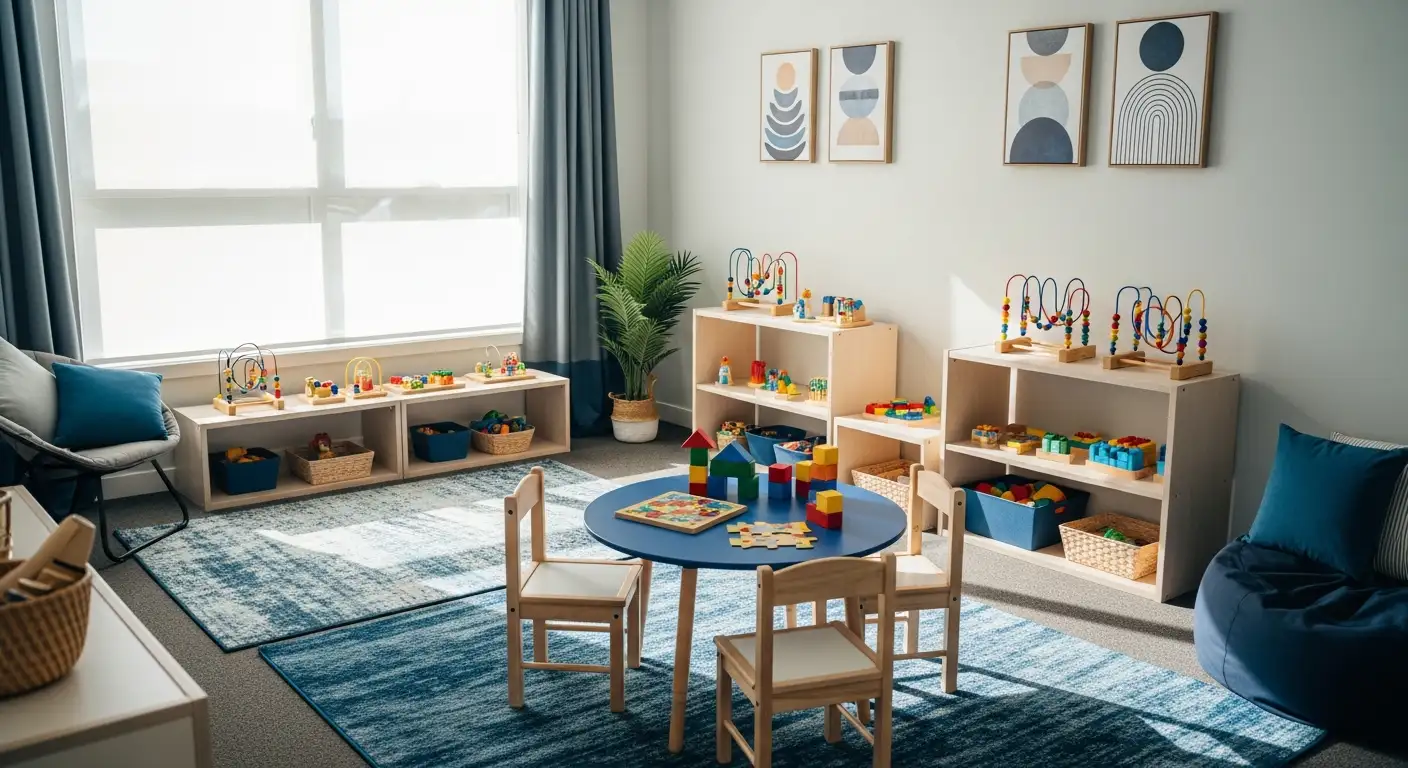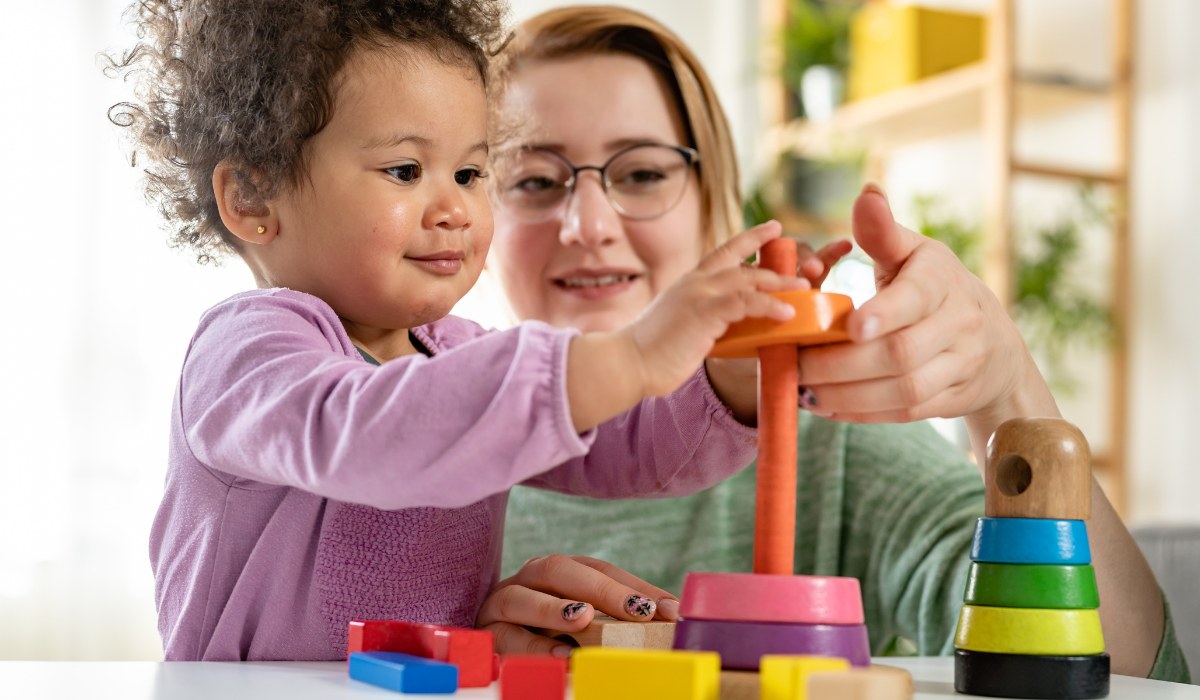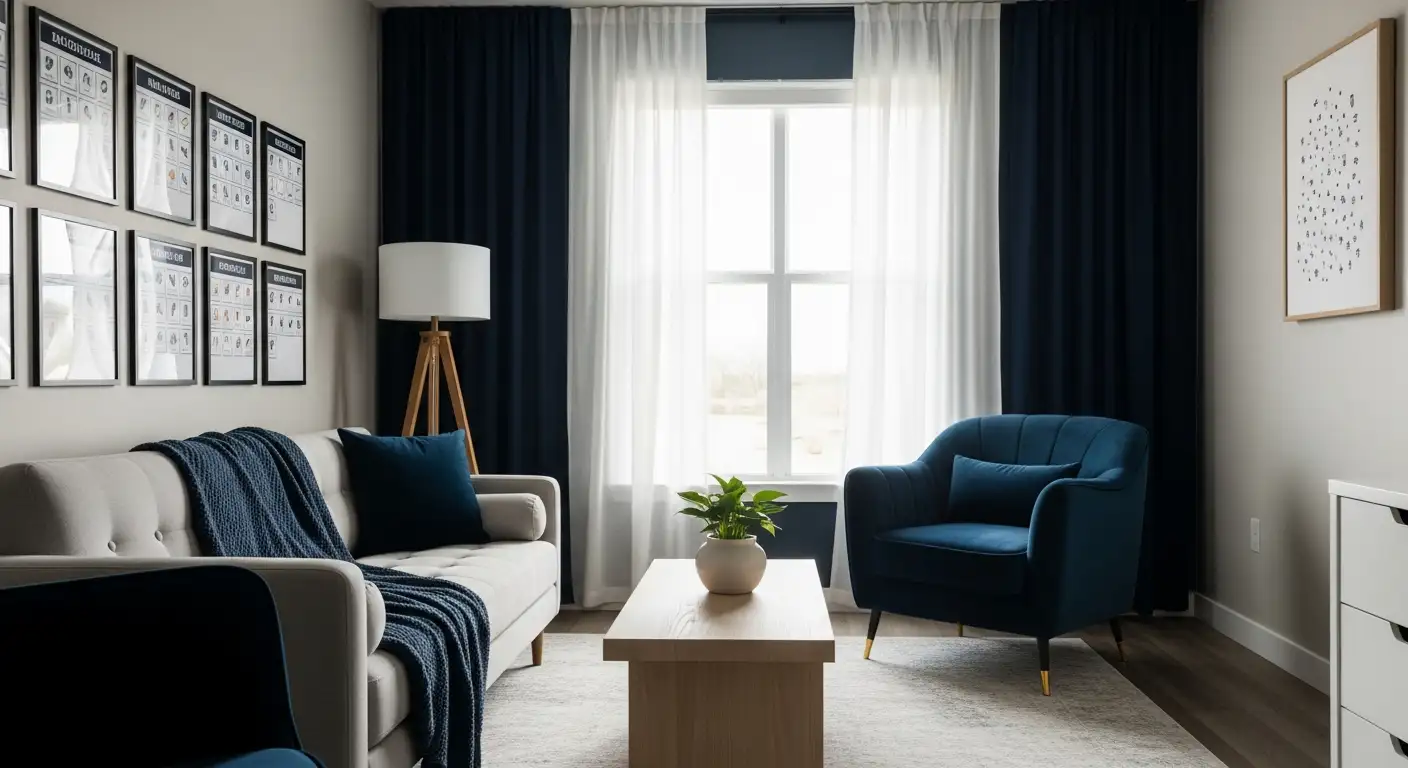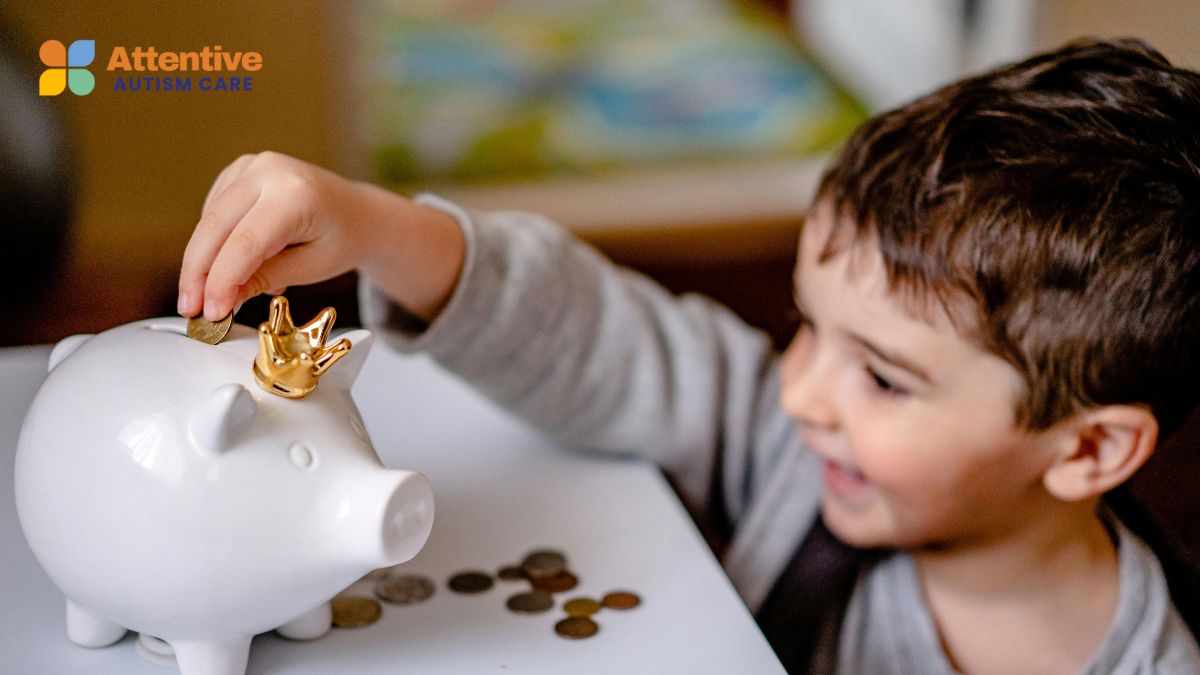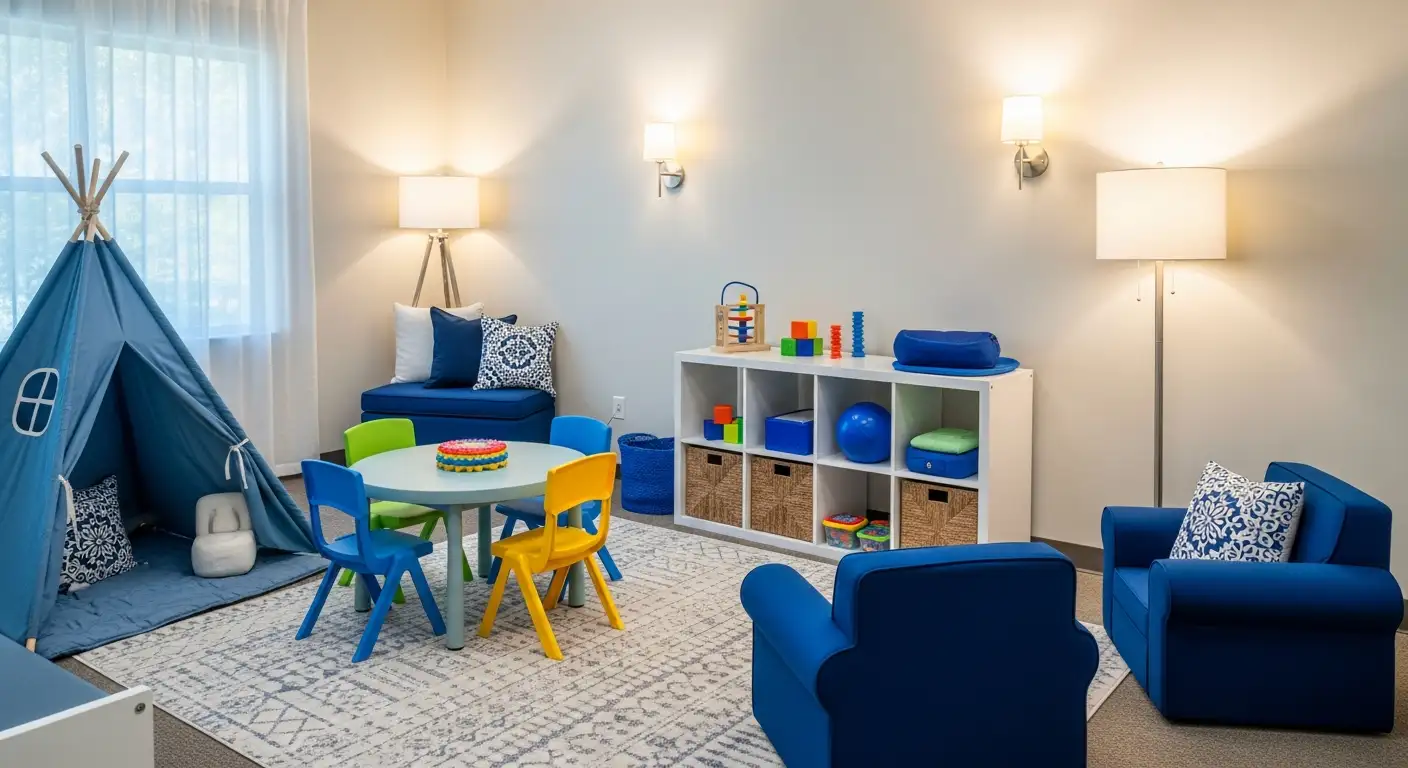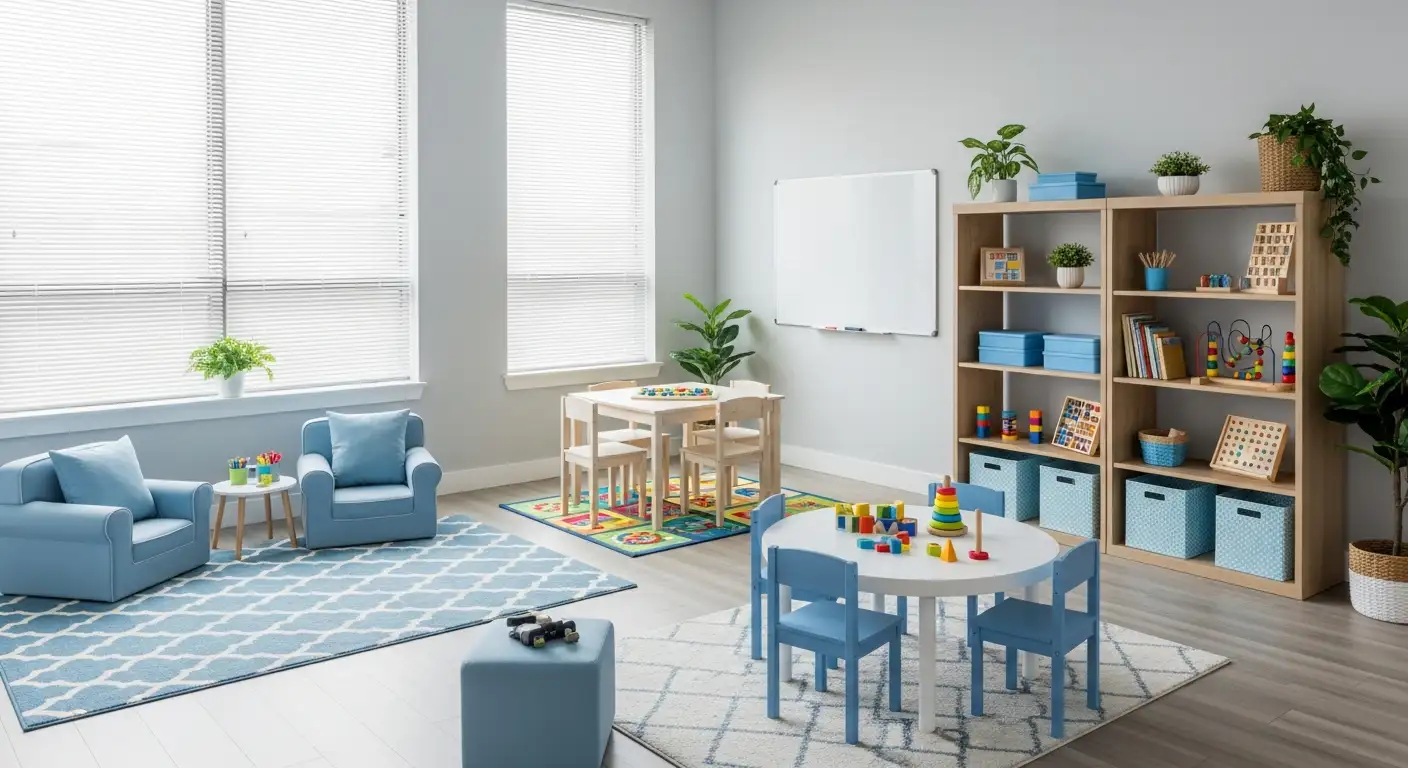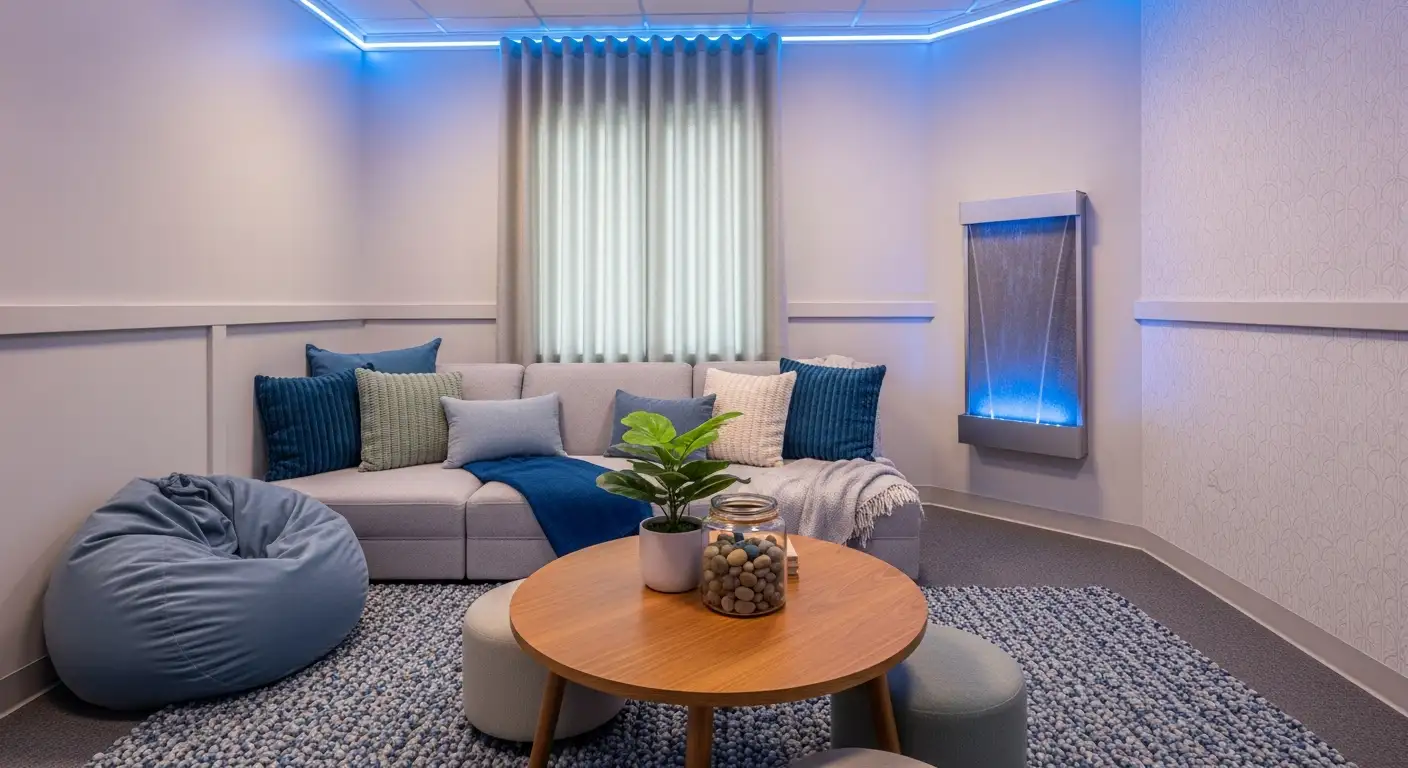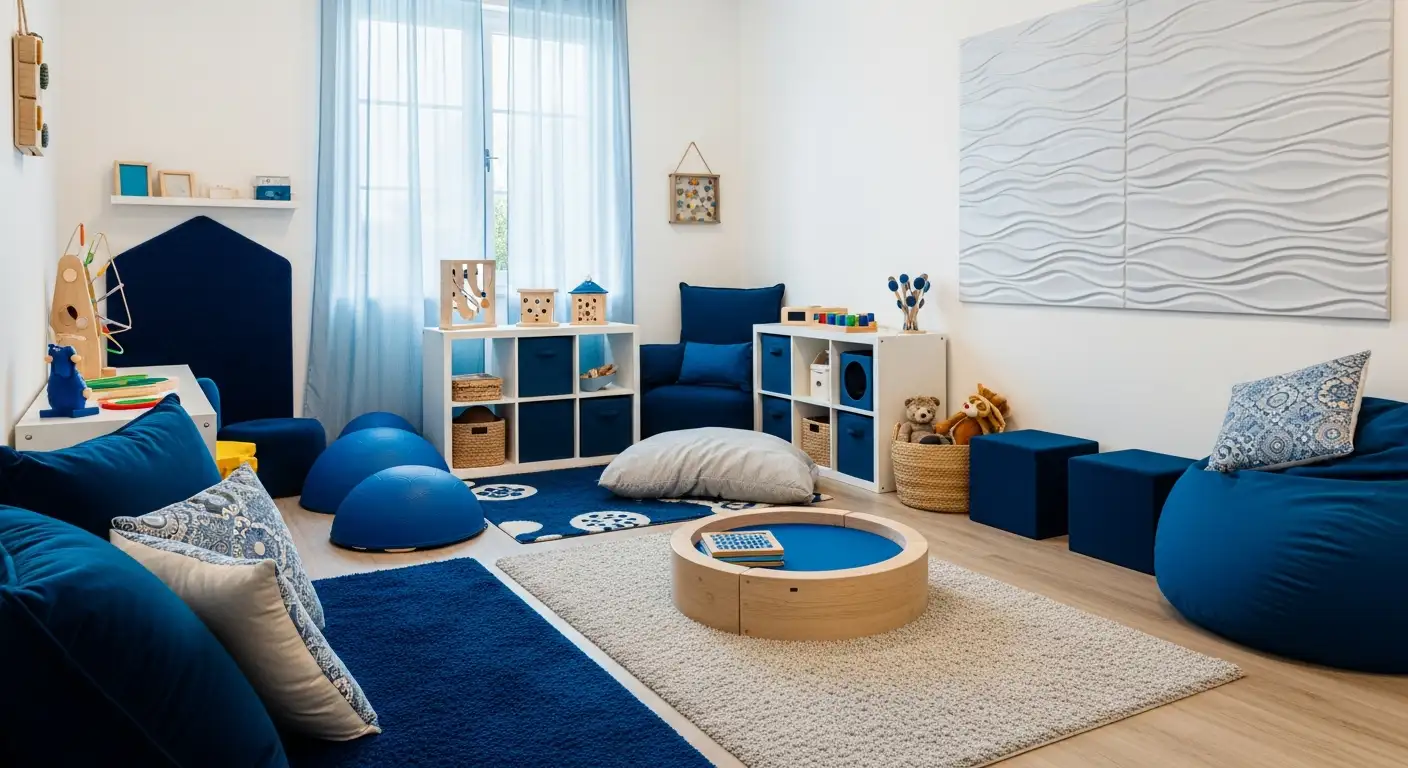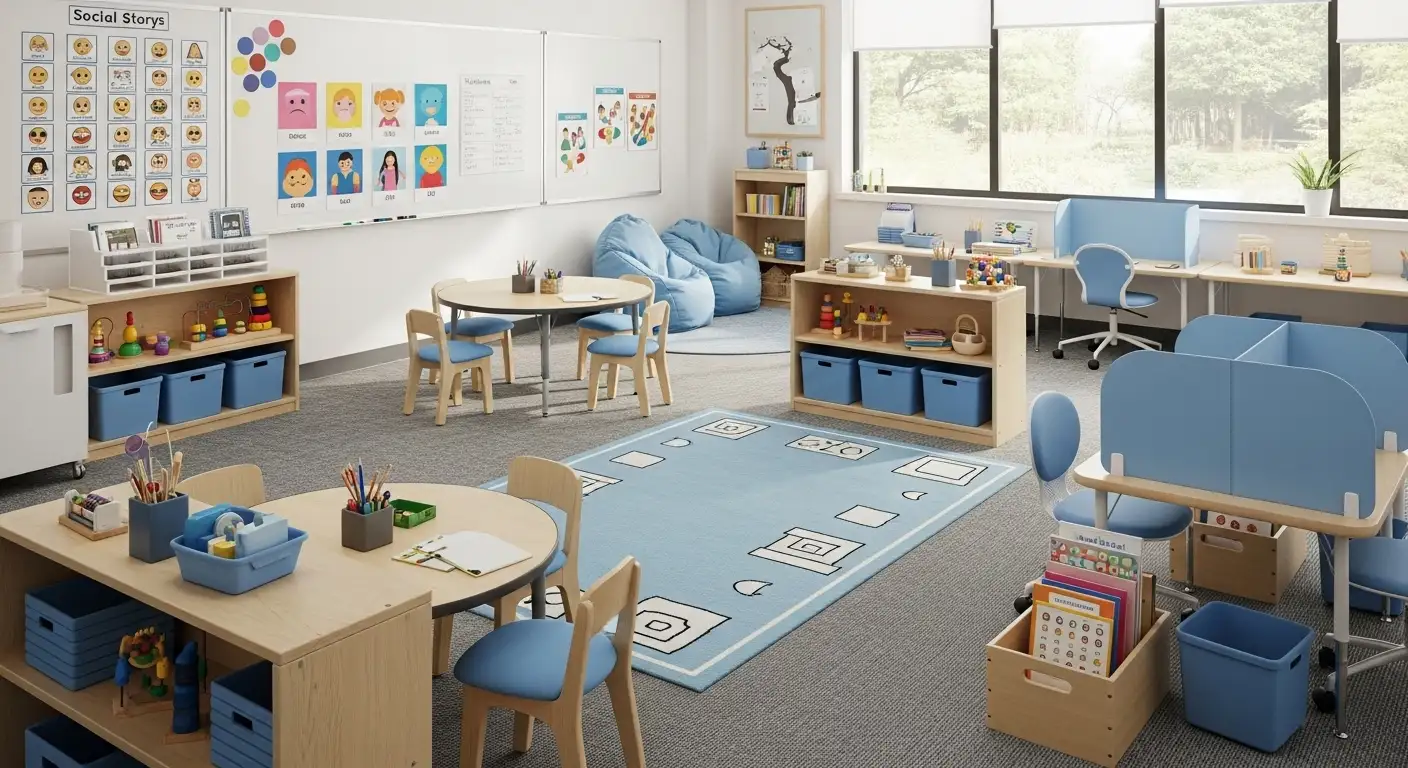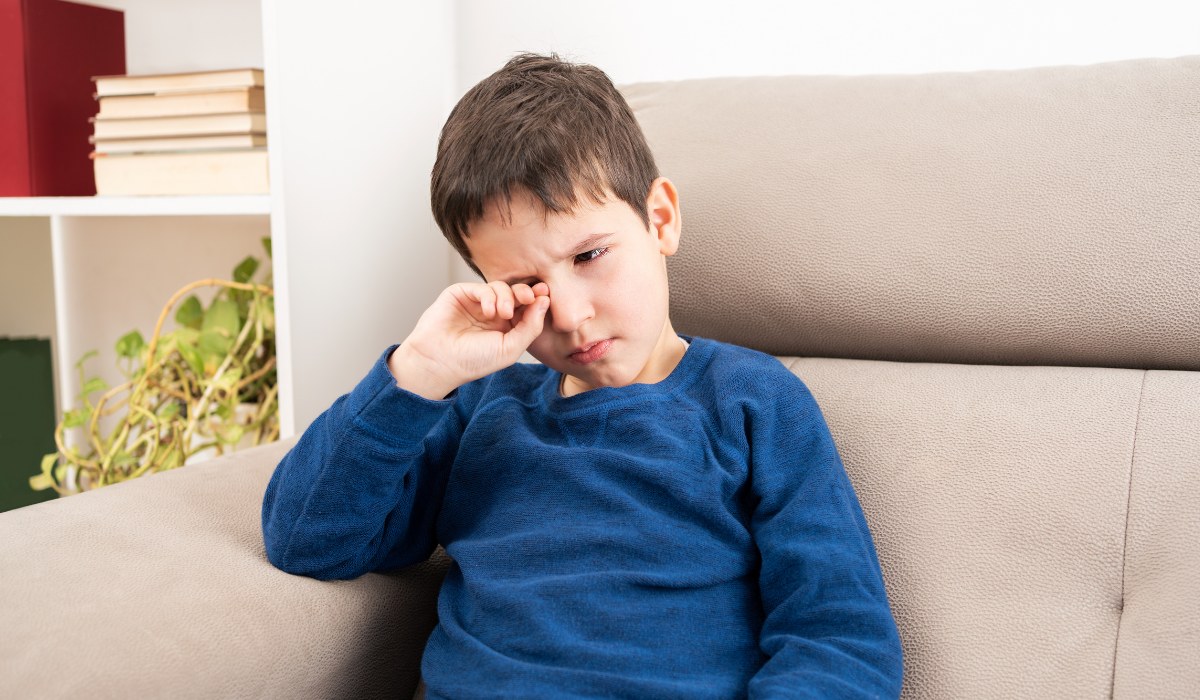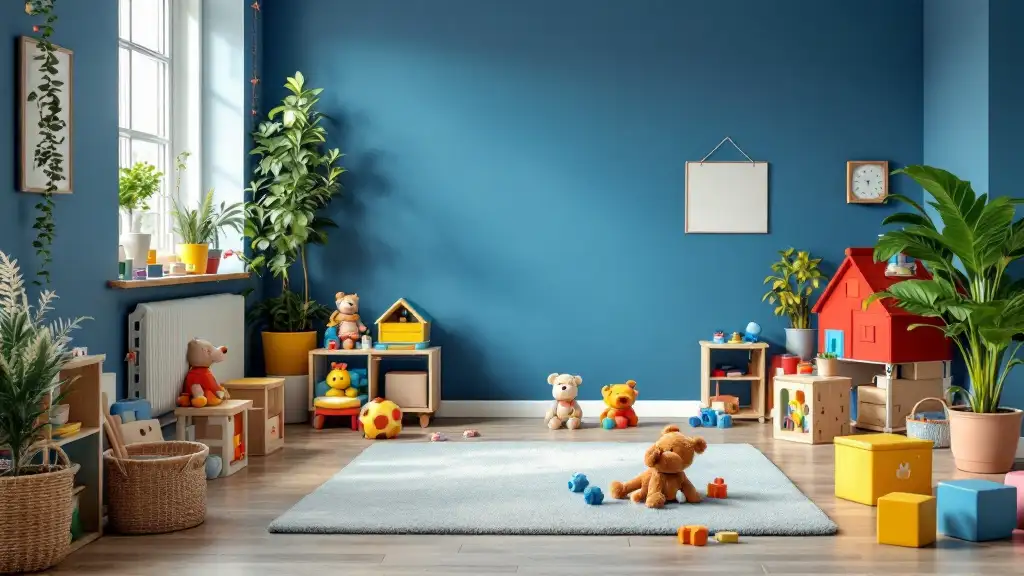Addressing Sleep Challenges in Children with Autism
Improving Sleep and Well-being in Children with Autism Spectrum Disorder

Understanding Sleep Challenges in Autism
Children with autism spectrum disorder (ASD) commonly experience significant sleep difficulties that affect not only their nightly rest but also their daytime behavior and overall quality of life. Addressing these sleep challenges is critical for improving developmental outcomes and reducing behavioral issues. This article explores the nature of sleep problems in children with autism, the application of behavioral interventions including Applied Behavior Analysis (ABA), and other supportive strategies to promote healthier sleep patterns and family well-being.
Prevalence and Nature of Sleep Problems in Children with Autism
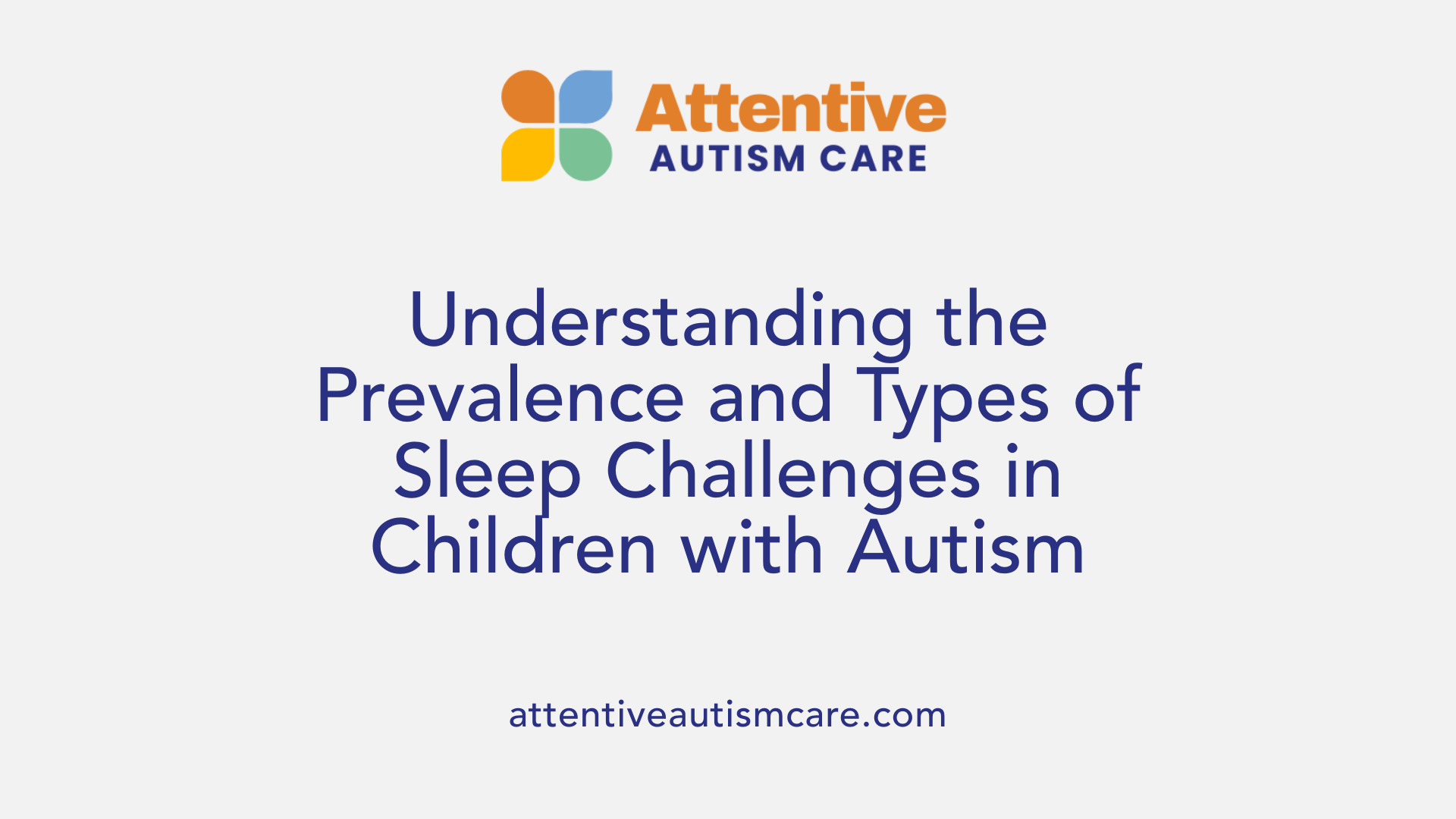
What types of sleep problems are common in children with autism?
Children with autism spectrum disorder (ASD) often face a variety of sleep issues. Common problems include sleep onset delay (difficulty falling asleep), frequent night wakings, early morning awakenings, and resistance to bedtime routines. Many also experience co-sleeping tendencies and irregular sleep-wake cycles, leading to reduced total sleep time.
How prevalent are sleep disturbances in children with ASD compared to typically developing peers?
Sleep problems affect a high proportion of children with ASD, with prevalence estimates ranging from 40% to 80%. This rate is considerably higher than the 25% to 40% reported in typically developing children, highlighting the increased challenge that sleep disturbances pose in the autism population.
What role do sensory sensitivities and co-occurring medical conditions play in complicating sleep?
Sensory sensitivities common in children with ASD—such as heightened responses to light, touch, and sound—can significantly interfere with their ability to settle and maintain sleep. Additionally, various medical conditions including gastroesophageal reflux, obstructive sleep apnea, seizures, and anxiety frequently co-occur, further complicating sleep patterns and quality.
How do circadian rhythm disturbances and abnormal melatonin regulation impact sleep in children with autism?
Children with ASD often experience disruptions in their circadian rhythms, the body’s internal clock regulating sleep-wake cycles. Abnormal melatonin secretion, an important hormone that promotes sleep, has been observed in many affected individuals. These neurophysiological abnormalities contribute to irregular sleep timing and overall poorer sleep quality.
| Sleep Issue | Description | Impact on Children with ASD |
|---|---|---|
| Sleep Onset Delay | Difficulty falling asleep at bedtime | Leads to shorter overall sleep duration and daytime fatigue |
| Night Wakings | Multiple awakenings during the night | Interrupts sleep continuity, causing tiredness and irritability |
| Early Morning Wakings | Waking earlier than desired | Reduces restorative sleep time |
| Co-sleeping | Sleeping with parents or caregivers | Often a response to bedtime resistance or anxiety |
| Sensory Sensitivities | Heightened sensitivity to stimuli such as light or sound | Makes settling down difficult |
| Medical Conditions | Conditions like reflux or sleep apnea | Complicate sleep and require targeted intervention |
| Circadian Rhythm Disturbances | Irregular sleep-wake timing and melatonin secretion | Leads to non-restorative sleep and daytime challenges |
Behavioral Sleep Interventions: The Frontline Approach
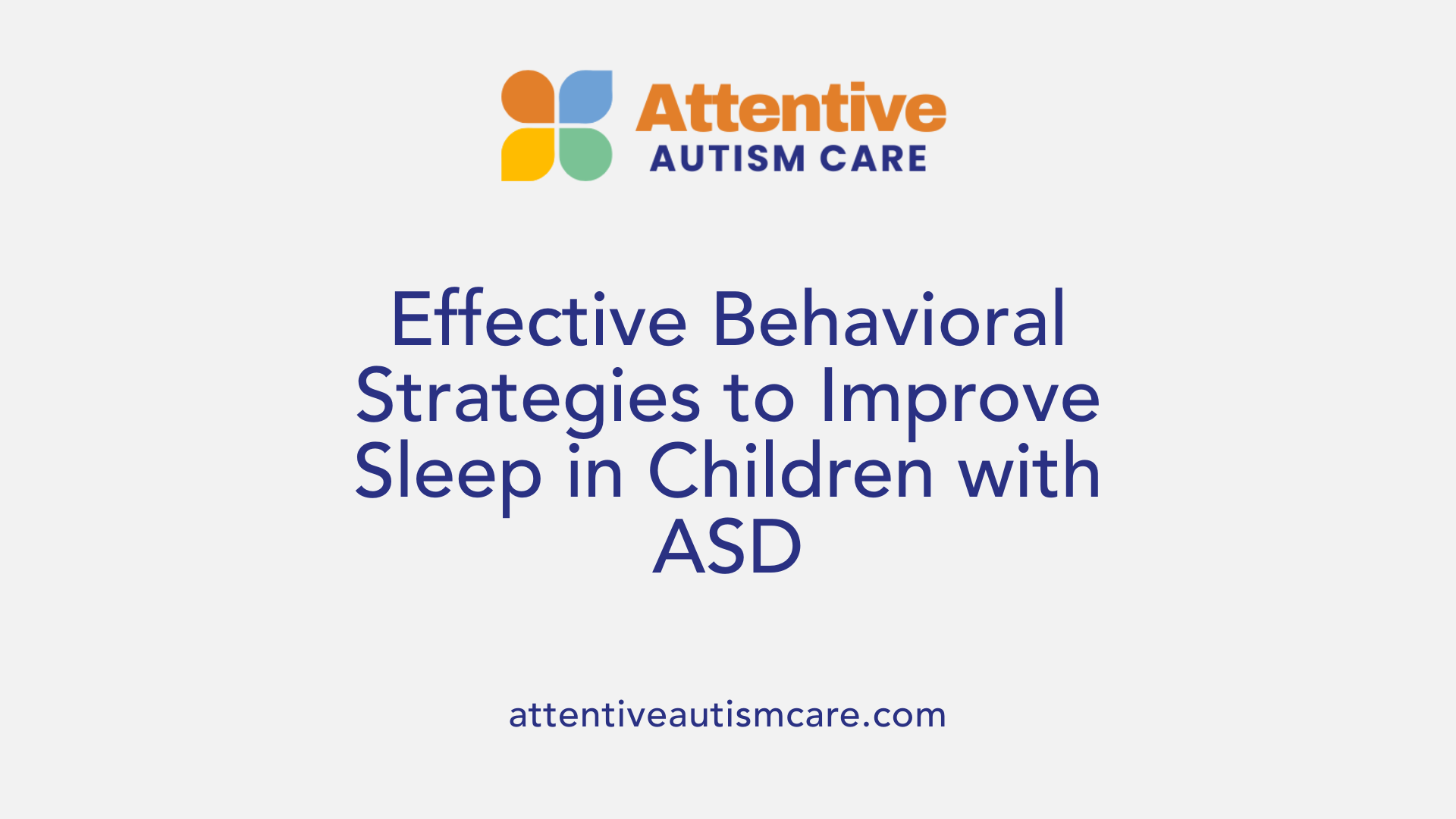
How can behavioral sleep interventions help children with autism?
Behavioral sleep interventions serve as the first-line treatment for sleep problems in children with autism spectrum disorder (ASD). These interventions begin with a thorough assessment of sleep routines and patterns, identifying the various factors that contribute to sleep difficulties. They then implement tailored strategies designed to improve both sleep quality and associated daytime behaviors.
Role and types of behavioral sleep interventions used for children with ASD
These interventions encompass various approaches grounded in Applied Behavior Analysis (ABA). Common techniques include:
- Sleep hygiene practices: Emphasizing consistent bedtime routines, appropriate environmental adjustments (like dim lighting), and minimizing stimulation before sleep.
- Extinction and graduated extinction: Gradually reducing bedtime resistance and night wakings by controlling parental responses.
- Sensory management: Addressing sensory sensitivities through the use of weighted blankets or compression bedding to alleviate discomfort.
- Stimulus fading: Helping children transition away from co-sleeping arrangements to independent sleeping.
Components of behavioral strategies such as sleep hygiene, bedtime routines, positive reinforcement, and sensory management
Effective interventions often involve establishing calming bedtime rituals featuring music, stories, or comforting objects. Positive reinforcement strategies, such as reward systems and visual supports, motivate children to adopt healthy sleep habits.
Managing sensory challenges plays a crucial role. For example, tools like compression sheets can soothe tactile sensitivities, though the benefit of weighted blankets on sleep duration and quality shows mixed results. Additionally, managing anxiety or night terrors with relaxation techniques such as massage can enhance sleep outcomes.
Outcomes of behavioral interventions in improving sleep and daytime behavior
Studies, including randomized controlled trials and pre-post research, have demonstrated significant improvements in sleep onset delay, reduced night wakings, and increased total sleep time after behavioral interventions. These sleep gains also correlate with positive daytime effects, notably decreases in stereotypic behaviors, anxiety, hyperactivity, and improvements in social and emotional functioning.
Importance of parental involvement and family-based delivery in natural settings
Interventions delivered in natural home environments with parents acting as primary agents show greater effectiveness. This family-centered approach not only improves sleep patterns but also extends benefits to daytime behavior and overall quality of life. Parents receive support during implementation phases, guiding the consistent application of techniques which is vital for long-term maintenance.
In conclusion, behavioral sleep interventions tailored to children with ASD provide a multi-faceted strategy that improves sleep and enhances daytime functioning, particularly when integrated into the family’s natural environment with active parental participation.
Applied Behavior Analysis (ABA) Therapy in Autism and Sleep

What is Applied Behavior Analysis (ABA) therapy and how is it used to support individuals with autism?
Applied Behavior Analysis (ABA) therapy is a scientific approach focused on understanding and improving behavior by applying principles like reinforcement and functional assessment. This therapy is widely recognized as an evidence-based intervention for individuals with autism spectrum disorder (ASD).
ABA aims to develop communication, social skills, and daily living abilities through individualized programs. Techniques such as discrete trial training and naturalistic teaching are used in various settings including homes, clinics, and schools. Importantly, ABA not only builds positive behaviors but also reduces challenging behaviors by analyzing their function and applying suitable interventions.
Recent research has demonstrated that ABA-based behavioral sleep interventions—such as sleep hygiene improvements, extinction methods, graduated extinction, reinforcement strategies, and sensory adaptations—can effectively reduce common sleep problems in children with ASD. These include sleep onset delay, night wakings, and irregular sleep-wake cycles.
How is ABA therapy tailored and implemented for individuals with autism?
ABA therapy is highly individualized, focusing on specific goals based on comprehensive assessments of each person’s strengths, weaknesses, and needs. In addressing sleep issues, therapists assess current sleep routines and environmental factors that may disrupt sleep.
Interventions often involve establishing consistent and calming bedtime routines incorporating music, dim lighting, stories, and familiar objects. Reinforcement techniques encourage positive sleep behaviors, while systematic methods like gradual bedtime adjustments and behavior management promote long-term success.
Sensory sensitivities commonly experienced by autistic children are addressed through tailored strategies, such as the use of compression sheets or weighted blankets, although evidence for these varies. Addressing anxiety through relaxation techniques or scheduled awakenings can also be part of the plan.
Use of ABA techniques specifically in addressing sleep problems
ABA techniques target the behavioral aspects of sleep difficulties in children with autism. Methods such as extinction and graduated extinction help reduce bedtime resistance and night awakenings by minimizing disruptive behaviors and reinforcing independent sleep.
Visual supports, cueing, and positive reinforcement including reward systems can promote adherence to bedtime routines. These strategies support children in developing healthier sleep habits which, in turn, positively affect daytime behaviors like reduced anxiety and hyperactivity.
Who typically provides ABA therapy and what qualifications do they have?
ABA therapy is delivered by qualified professionals including Board Certified Behavior Analysts (BCBAs), licensed ABA therapists, and Registered Behavior Technicians (RBTs). These providers typically hold degrees in psychology, education, or related fields, along with specialized graduate-level ABA training.
Certification is earned through the Behavior Analyst Certification Board (BACB), requiring supervised practical experience. Providers operate in various environments such as clinics, schools, community agencies, and homes, ensuring that interventions are evidence-based and tailored to individual needs.
This professional expertise is essential to translate ABA principles into effective, personalized treatment plans addressing the complex behavioral and sleep challenges frequently encountered by individuals with autism.
How ABA-Based Behavioral Strategies Improve Sleep in Children with ASD

What ABA Techniques Are Used to Treat Sleep Problems in Children with ASD?
Applied Behavior Analysis (ABA) employs several effective techniques tailored to address sleep challenges in children with Autism Spectrum Disorder. Core approaches include sleep hygiene practices, extinction methods, and positive reinforcement. Sleep hygiene focuses on creating consistent bedtime routines and an optimal environment, such as dim lighting and calming activities, to signal sleep readiness.
Extinction techniques, such as graduated extinction, help reduce problematic behaviors like bedtime resistance by gradually limiting parental responses to night wakings, encouraging the child to self-soothe. Positive reinforcement leverages reward systems to encourage and maintain desirable sleep habits, promoting consistency and cooperation.
How Does Stimulus Fading Help Reduce Co-Sleeping?
Stimulus fading is a behavioral method that gently transitions children away from co-sleeping by gradually increasing the physical distance between the child and caregiver during bedtime routines. For instance, parents might start by sitting next to the child's bed, then progressively move closer to the door over subsequent nights. This gradual reduction in proximity reduces anxiety and dependence on co-sleeping, leading to improved independent sleep.
What Are the Benefits of Consistent Routines and Positive Reinforcement on Sleep?
Establishing a consistent bedtime routine is vital for children with ASD to reduce sleep onset delay and nighttime awakenings. Calming, predictable activities like listening to music, storytelling, or using familiar objects (e.g., a special blanket) prepare the child for sleep. Reinforcing these behaviors with positive rewards increases their recurrence and acceptance.
Over time, these routines and reinforcements lead to improved sleep maintenance and quality, creating a stable pattern beneficial for the child's overall well-being.
What Sleep and Daytime Behavior Improvements Are Documented?
Research shows that behavioral sleep interventions rooted in ABA significantly improve sleep outcomes such as reduced sleep onset delay, fewer night wakings, and longer total sleep time. These improvements often coincide with daytime benefits, including reductions in stereotypic behaviors, anxiety, hyperactivity, and improvements in emotional and social functioning.
ABA therapy programs are typically designed through comprehensive assessments to set personalized goals targeting sleep and related daytime behaviors. Continuous monitoring and family participation help maximize effectiveness and maintain gains. When implemented in natural settings like the home, success rates and collateral benefits are higher.
Overall, ABA-based behavioral strategies offer a practical and evidence-supported route to improving sleep problems in children with ASD, positively impacting daytime functioning and quality of life.
Pharmacological and Alternative Approaches to Sleep in Autism
Use of Melatonin and Recent Formulations for Sleep Onset and Duration in ASD
Melatonin is widely used to improve sleep onset and duration in children with autism spectrum disorder (ASD). Recent formulations have shown promising results, helping many children fall asleep faster and stay asleep longer. This hormone, which regulates the circadian rhythm, is particularly helpful due to frequent melatonin dysregulation in autistic children.
Cautions Regarding Other Pharmacological Agents Due to Limited Evidence
While melatonin is well-studied, other pharmacological treatments lack robust evaluation in ASD populations. These medications require caution as their safety and efficacy remain uncertain, and they are not considered first-line treatments. Clinicians often prefer behavioral interventions before trying additional drugs.
Preliminary Research on Supplements Like Antioxidants and Ashwagandha
Some families and practitioners explore supplemental and alternative medicine options, such as antioxidants and natural products like Ashwagandha, to support sleep in autistic children. Although preliminary evidence exists, these approaches need further research to confirm their effectiveness and safety.
The Role of Exercise and Relaxation Techniques in Supporting Sleep Quality
Daytime exercise is a useful, non-pharmacological strategy to reduce hyperactivity and enhance sleep quality. Relaxation methods, including massage therapy, can also address anxiety and night terrors, promoting a more restful sleep. Together, these approaches complement sleep hygiene and behavioral interventions to create holistic sleep support for children with ASD.
Challenges and Future Directions in Managing Sleep Problems in ASD
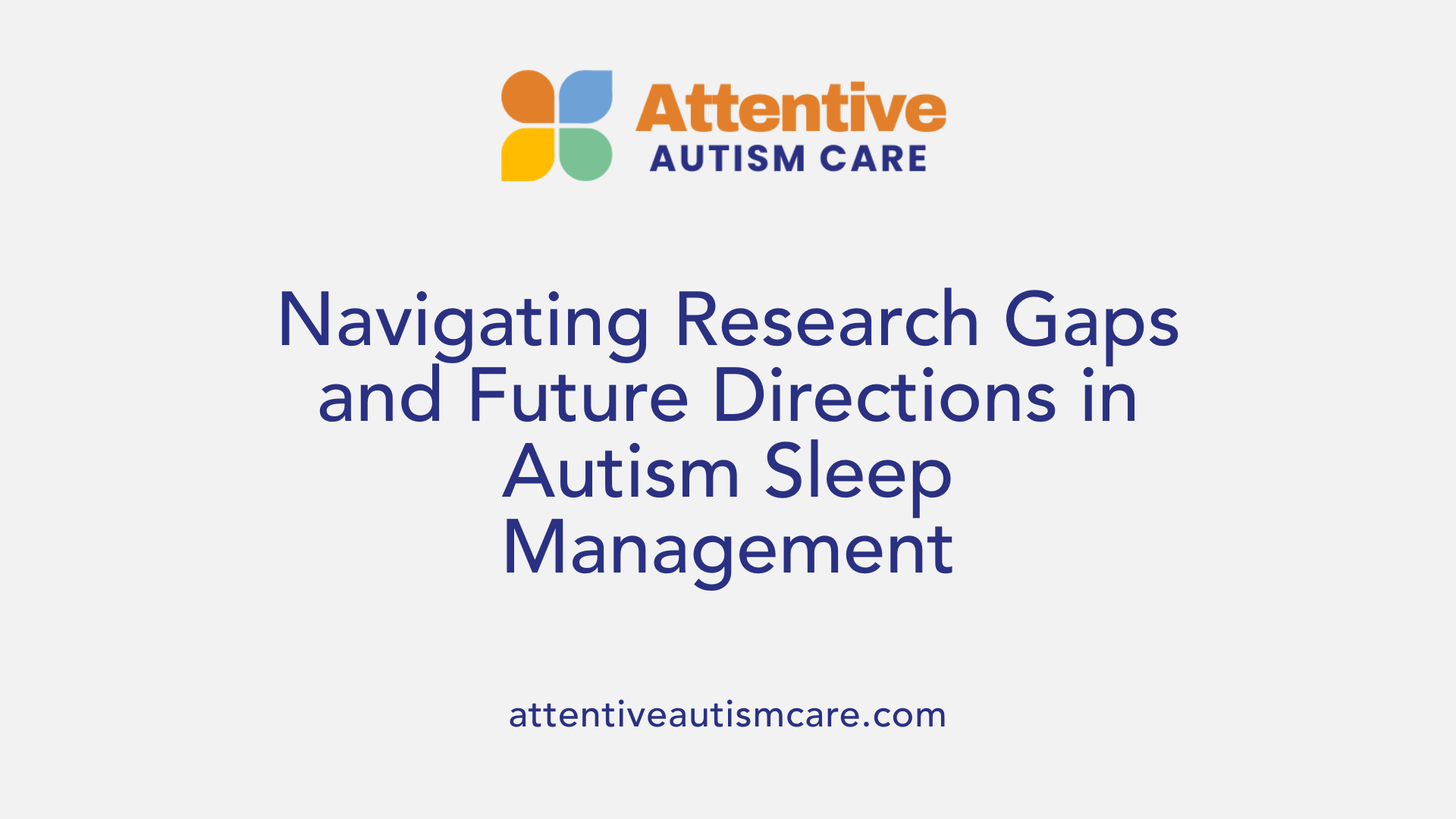
Why is More High-Quality Research Needed on Behavioral Sleep Interventions?
Although behavioral sleep interventions are widely used and show promise in improving sleep for children with autism, only a few studies meet high methodological standards. Most research varies in quality, and only one randomized controlled trial has been rated as strong. More rigorous, well-designed studies are essential to confirm which specific strategies are most effective and for whom.
How Can Objective and Parent-Reported Measures Enhance Research Reliability?
Combining objective tools like actigraphy with parent-reported sleep diaries leads to a more comprehensive assessment of sleep outcomes. Objective measures provide unbiased data on sleep patterns, while parent reports offer critical insight into behavioral changes and contextual factors, enhancing the validity of research findings.
What Mechanisms Underlie Daytime Behavioral Improvements?
Improved sleep not only helps with sleep-specific issues but also reduces core ASD symptoms such as stereotypic behaviors and anxiety. However, the biological and psychological processes driving these collateral daytime benefits remain unclear. Understanding these mechanisms could optimize interventions to maximize overall wellbeing.
What Are the Challenges in Long-Term Maintenance and Family Support?
Behavioral changes require consistent effort by families, especially when interventions involve systematic modifications like gradually adjusting bedtimes or managing sensory sensitivities. Ensuring sustained adherence over time is challenging but crucial to maintaining sleep improvements and their daytime advantages.
How Does the Complex Etiology of Sleep Problems Impact Treatment?
Sleep difficulties in ASD arise from multiple intertwined causes including neurophysiological abnormalities, melatonin dysregulation, sensory sensitivities, anxiety, and co-occurring medical conditions. This complexity necessitates individualized treatment plans combining behavioral, environmental, and sometimes pharmacological strategies tailored to each child's unique needs.
Integrating Sleep Management into Comprehensive Autism Care
How do sleep problems affect ASD core symptoms and behaviors?
Children with autism spectrum disorder (ASD) frequently experience significant sleep disturbances, with up to 80% affected. These sleep issues worsen core symptoms such as social communication challenges and stereotypic behaviors. Furthermore, maladaptive behaviors including aggression, self-injury, irritability, and hyperactivity often intensify when sleep is poor. In low-functioning children with ASD, sleep disturbances tend to be more severe and complex, compounding behavioral difficulties.
What benefits does improving sleep bring to development and family well-being?
Addressing sleep problems can lead to meaningful improvements in daytime functioning and emotional regulation, reducing anxiety and hyperactivity. Better sleep quality is linked with lessening ASD symptom severity and enhancing social and emotional skills. These positive changes extend beyond the child, improving overall family wellbeing by reducing stress, improving parent-child interactions, and elevating quality of life for caregivers and siblings.
How do behavioral interventions fit into a multidisciplinary approach?
Behavioral sleep interventions, particularly those rooted in Applied Behavior Analysis (ABA), play a crucial role in integrated autism care. Techniques such as sleep hygiene, extinction methods, reinforcement strategies, and sensory modifications effectively reduce delays in sleep onset, night wakings, and bedtime resistance. Such interventions are often combined with pharmacological treatments like melatonin and environmental adaptations in a comprehensive plan tailored to individual needs.
How can families be empowered in managing sleep?
Involving parents as the primary agents implementing behavioral strategies at home facilitates lasting improvements and collateral benefits. Education about consistent routines, positive reinforcement, and managing sensory sensitivities enables families to customize approaches effectively. Support and coaching empower caregivers to overcome challenges, adapt interventions as needed, and maintain gains over time, fostering a collaborative partnership in managing sleep difficulties within autism care.
Enhancing Sleep to Support Development and Family Life
Sleep difficulties in children with autism spectrum disorder present significant challenges that resonate throughout their daily functioning and family dynamics. Combining evidence-based behavioral strategies rooted in Applied Behavior Analysis with supportive pharmacological and lifestyle interventions offers promising avenues to improve sleep quality. While ongoing research is needed to refine these approaches and sustain their benefits long-term, early and consistent intervention—especially when delivered with active family involvement—can markedly enhance both sleep and overall behavioral functioning. Addressing sleep is thus a vital component of holistic autism care that supports the well-being of children and their families.
References
- Behavioural Treatments for Sleep Problems in Children ...
- Interventions | Center for Sleep in Autism Spectrum Disorder
- Treating Sleep Disorders
- Systematic review of the collateral effects of behavioral ...
- The relationship between sleep and behavior in autism ...
- How to Become an Applied Behavior Analyst (ABA) Therapist
- How to Become an ABA Therapist - School of Education
- Applied Behavior Analysis (ABA)


